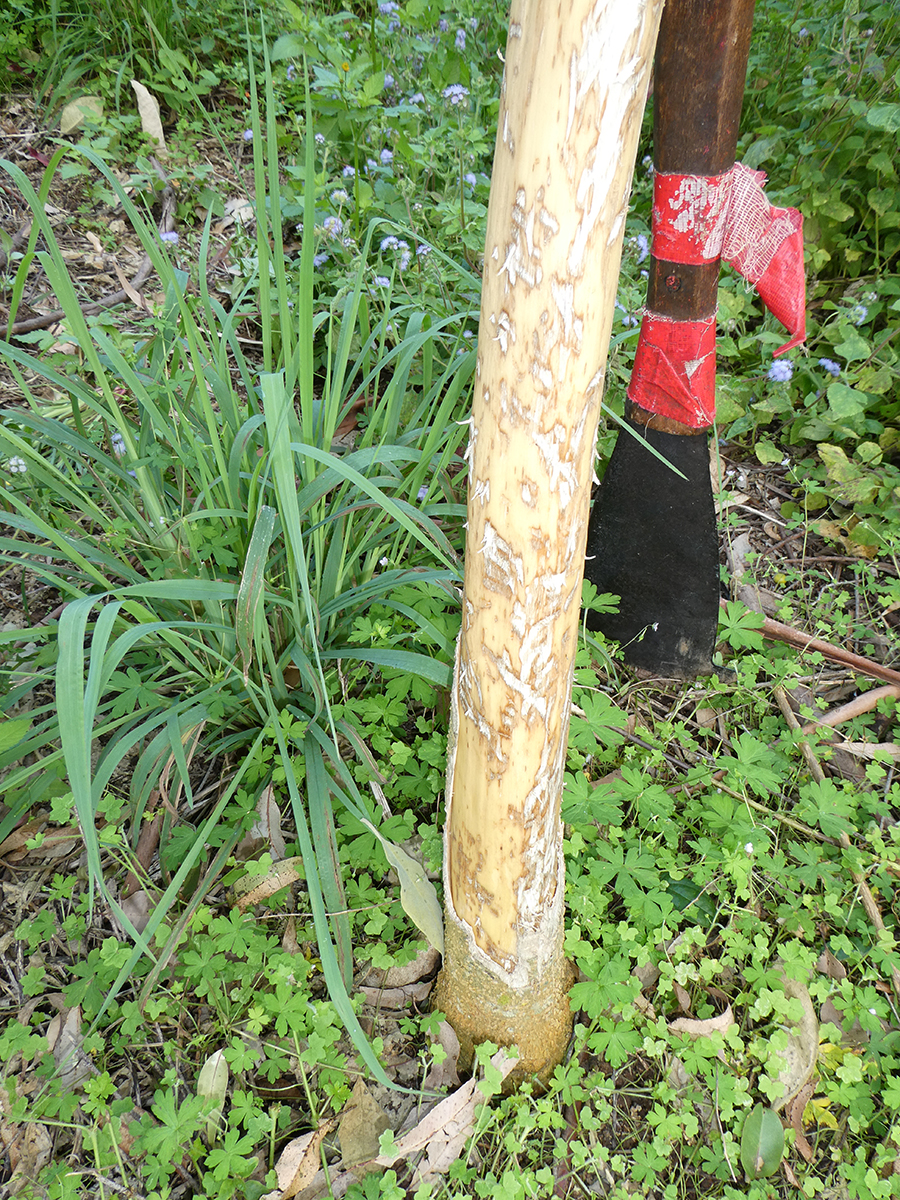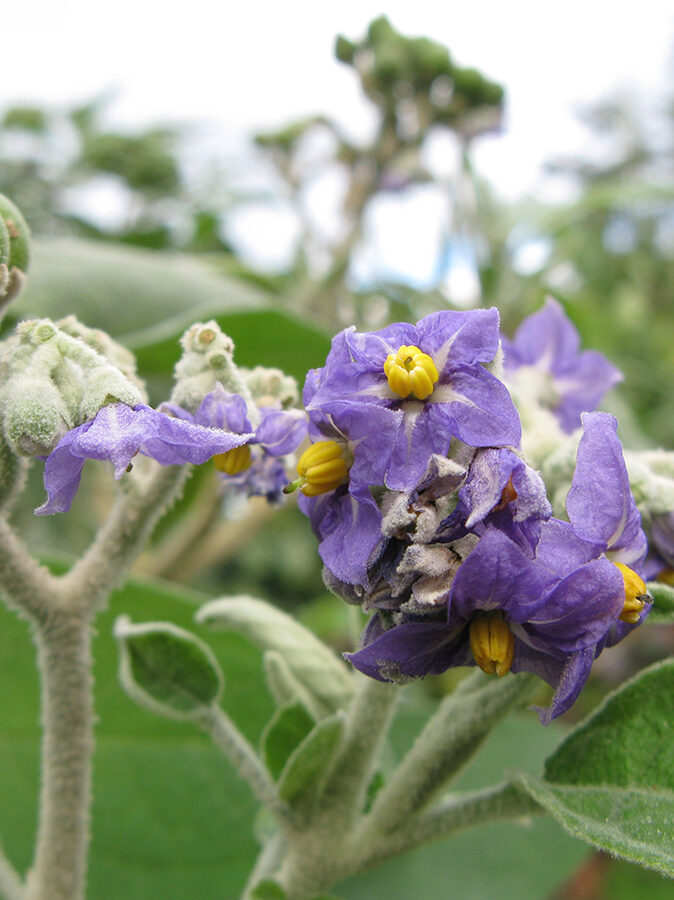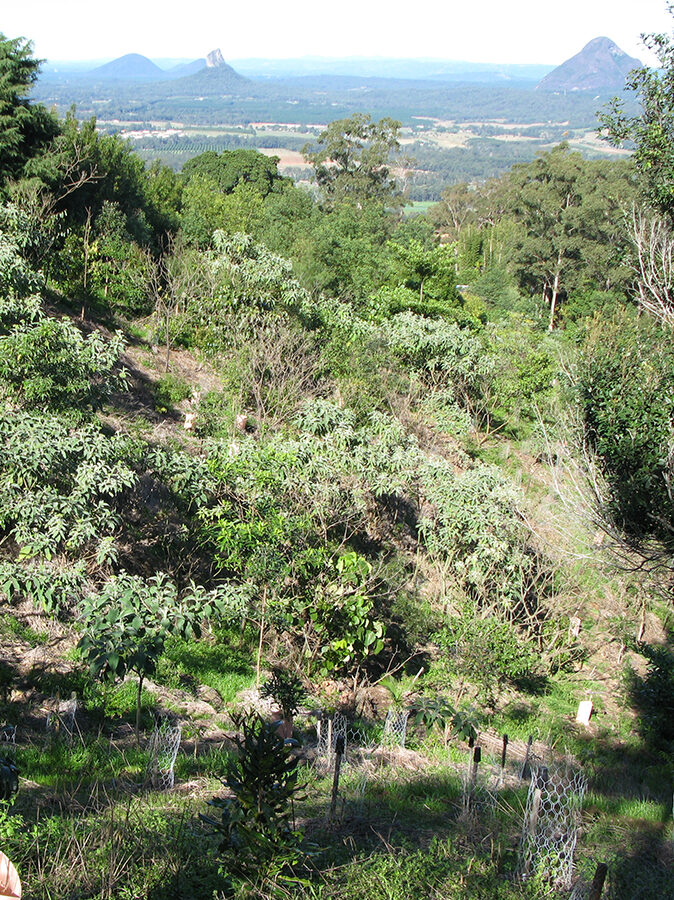Ten years ago, we extolled the virtues of the exotic weed, Wild Tobacco (Solanum mauritianum), as a convenient pioneer species in revegetation projects in an article in the October 2013 Land for Wildlife SEQ newsletter. While nothing has happened to change our views on this, we thought a recent experience with this species was worth reporting in case other readers might have seen something similar.
In early September 2022, at the top of our Mount Mellum property (400 metres above sea level), the focus of our final systematic revegetation efforts, we came upon a line of major damage, clearly animal attack. Interestingly, it was directed specifically and only at mature Wild Tobacco trees, growing amidst a wide range of young, native tree species, many unprotected. Over a narrow swath of about 150 metres, the trunks of ten trees had been stripped of bark, some patchily, others almost completely and effectively ringbarked up to a height of two metres. Several smaller ones had been partly knocked over. The pattern suggested that a single animal, walking along a meandering path, was responsible. Most trunks showed signs of teeth scrapings that were too big for a possum or flying fox. No other trees were touched, and no helpful scats could be found in the vicinity.
One can only speculate what could motivate such behaviour; the bark didn’t appear to have been eaten, only stripped off (angrily?!). These plants obviously have a strong odour and their predominant toxic compound is the alkaloid, solasodine (most highly concentrated in the unripe green berries, but found in all the plant’s tissues). It is used commercially as a precursor for the production of complex steroidal compounds, such as contraceptive pills and other sex hormones. Because deer have been sporadically sighted in our wider neighbourhood, we can only assume, through a process of elimination, that this was the culprit here. It might have been a mature male deer driven into a frenzy by a suggestively hormonal fragrance. We have not seen similar damage here since, so placing a camera trap would seem futile. The few trees totally ringbarked have died, while the others are slowly recovering.
Wild Tobacco may be a weed, but it can be a very handy one. It has played an important role in helping Paul and Melissa regenerate the paddocks on their property back to rainforest. Wild Tobacco was deliberately left in the once bare, heavily grazed paddocks to help provide shade, deter wallabies from eating planted trees (presumably they avoid the strong odour of Wild Tobacco) and encourage fruit-eating birds (they eat the Wild Tobacco fruit), which in-turn deposit native plant seeds. The damage done to the Wild Tobacco in the top images is presumably from a male deer.
Article and photos by Paul and Melissa Prociv
Land for Wildlife members
Mount Mellum, Sunshine Coast



